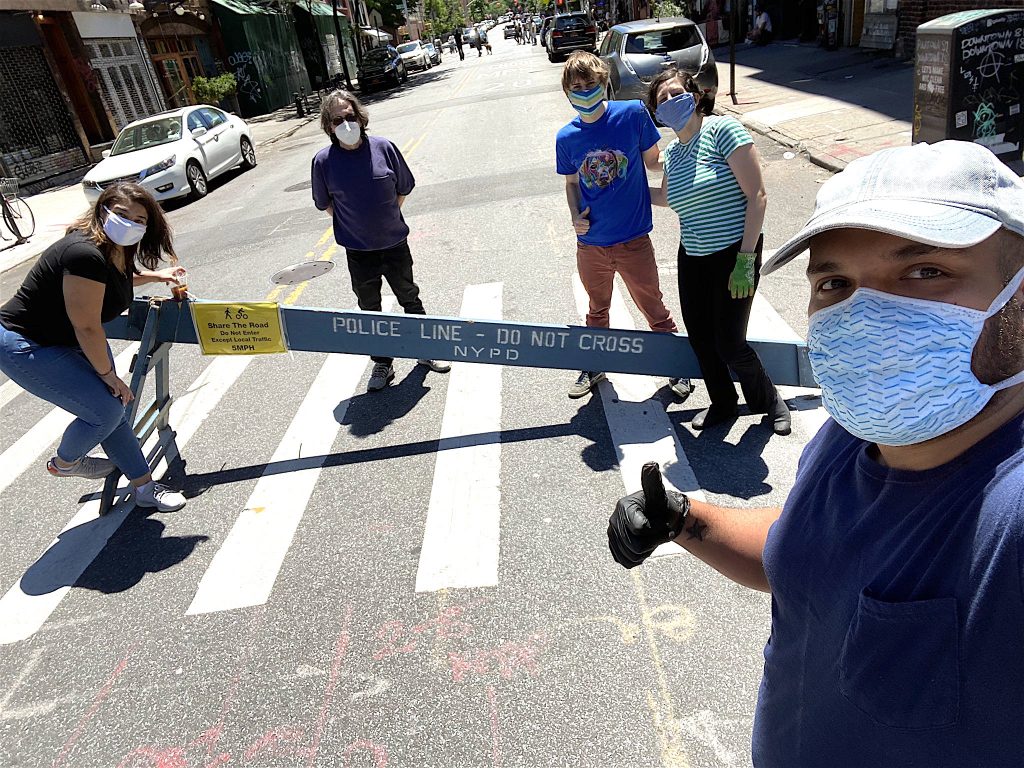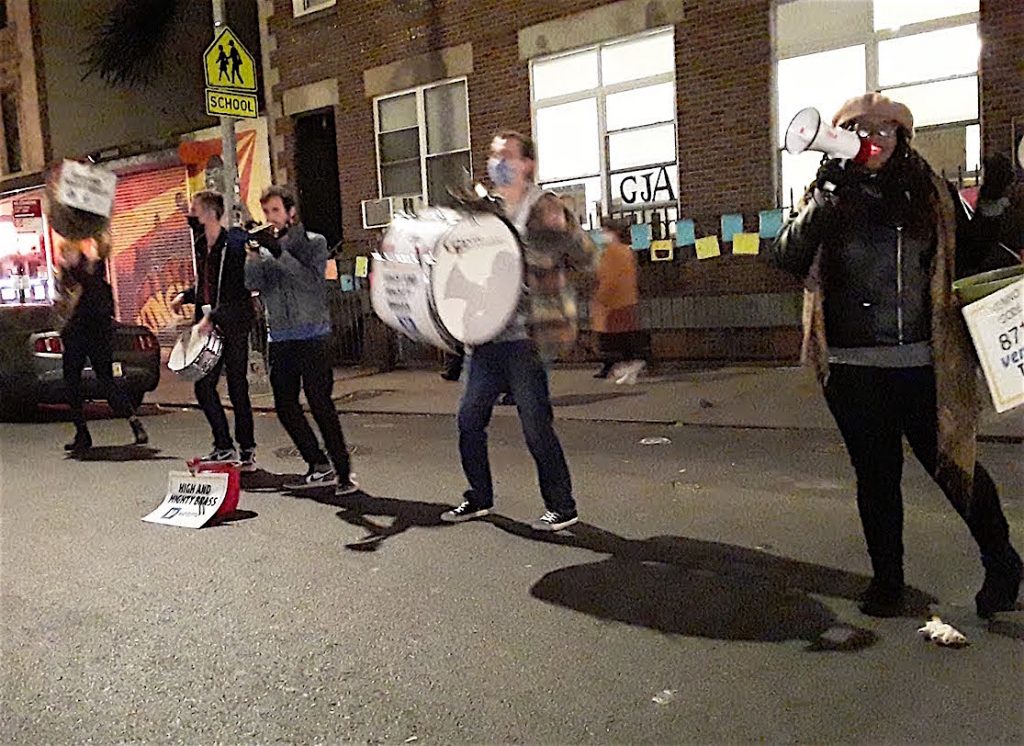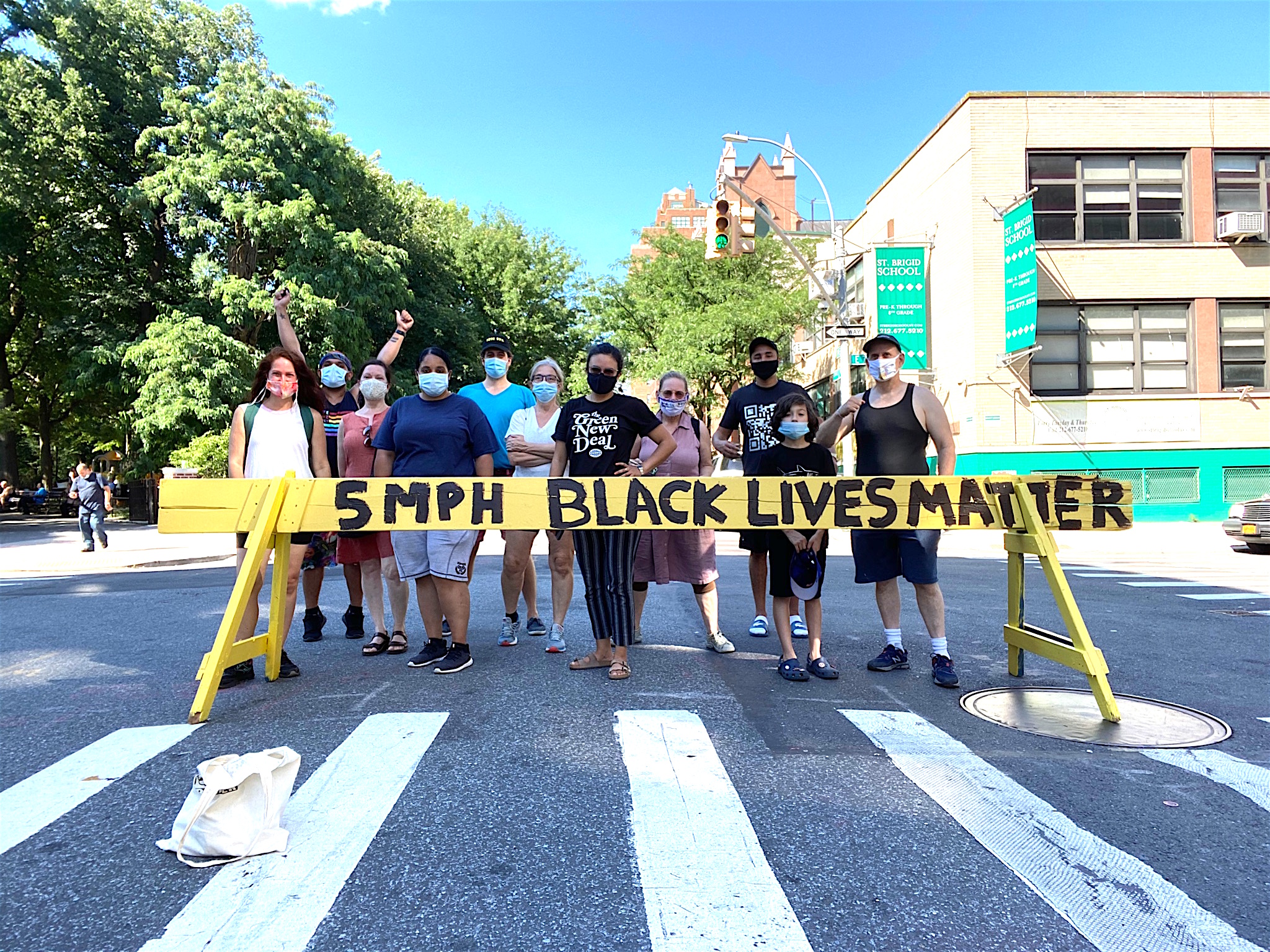BY THE VILLAGE SUN | New York City is going from “Mean Streets” to Open Streets.
The City Council voted overwhelmingly on Thursday to make the Open Streets program, launched a year ago during the pandemic, permanent. There were only eight No votes.
The driving force — scratch that — the walking and biking force behind the program is Councilmember Carlina Rivera, who was the lead sponsor a year ago of the original bill creating the program. Council Speaker Corey Johnson was a co-sponsor. The initiative was approved last April with the stated purpose of increasing space for social distancing amid the coronavirus pandemic. At that time, it was said that Open Streets would affect 1 percent of the city’s roadways.
Though COVID is now on the wane, the Council’s vote on Thursday not only made the Open Streets pilot program permanent but expanded it in several ways.
With the legislation’s passage, the city’s Department of Transportation will now be required to operate a permanent program for Open Streets program, which will be managed either by D.O.T. or local community organizations.
Also, D.O.T. will now be required to conduct annual evaluations of existing Open Streets to determine whether to enact permanent design changes — such as transforming them into shared streets or pedestrian plazas, raising the street grade or removing parking.
According to a press release from Rivera, “D.O.T. will be required to annually evaluate and report on any existing Open Streets to determine if any could benefit from a permanent suite of street changes. These include but are not limited to conversions into a shared street or pedestrian plaza, the addition of bicycle parking, signage, street markings, installation of bollards or street barriers, tree plantings, parking removal, street furniture and accessibility improvements, including raising of the street grade.
“Any conversions to permanent shared street or pedestrian plazas would satisfy benchmarks established in the Streets Master Plan, allowing for a more effective, community-led transition to a more pedestrian-friendly city,” Rivera noted.
In addition, Open Streets operators will now have the ability, when they apply, to designate parking spaces that they want to use for programming or other uses instead of vehicle parking. These uses could include event space or “parklets,” for example.
Also, under the newly approved changes, operators also now have the option to run Open Streets 24 hours a day, plus pursue complete road closures, subject to D.O.T. approval.

Open Streets operators will now be able to design their own signs and barriers, as well as street furniture — which was not permitted previously — following guidelines to be developed by D.O.T., similar to how restaurants have installed planters as roadway barriers at Open Restaurants locations.
In a win for equity, D.O.T. will also now be required to manage or provide resources or staffing to a minimum of 20 Open Streets in areas that would otherwise be underserved, so that they, too, can enjoy the program’s benefits.
An Open Streets booster, Mayor de Blasio recently announced a $4 million investment in the program and for new staffing provided through the new City Cleanups Corps.
Speaking before the full Council’s vote, Rivera hailed the Open Streets program and the “quick-build mentality” behind it.
“From Avenue B in my district, to 34th Ave. in Queens and Vanderbilt Ave. in Brooklyn,” Rivera said, “it’s clear that Open Streets aren’t just a solution to social distancing challenges posed by the pandemic — they are a successful model for pedestrian prioritization that has helped save local businesses, inspire entrepreneurs and performing artists and connect us to our neighbors in a way that few city programs have before. It’s time we expand this program equitably and make it permanent. That’s why I’m proud that the legislation we are passing today not only requires D.O.T. to use equity metrics and supply staff and resources for at least 20 Open Streets, but that it also provides more opportunities for Open Streets operators to implement new features on their streets and pursue permanent infrastructure changes, as well. This is the kind of quick-build mentality we should be bringing to transportation and infrastructure projects across our city as we recover from the pandemic and build back a New York City that is green, resilient and accessible to all.”
Council Speaker Corey Johnson said Open Streets is a model program and also just “good for the planet.”
“We are a city that has traditionally been starved for open space, and this bill is going to make sure we have more in all of our neighborhoods,” he said, in a statement before the full City Council vote. “I hope other cities follow our lead and programs like this take off everywhere. It’s good for the planet. We had such a difficult year last year, and this program was such a bright spot for so many people. I’m thrilled we’re making the open streets program permanent. As a bonus, this is going to help the city reach the benchmarks required by our Streets Master Plan, which includes the creation of a million new square feet of permanent pedestrian space by the end of 2023. With each Open Street, we can see what’s working well and which streets should be converted into permanent open space with design and capital upgrades for all New Yorkers to enjoy.”
Sophie Maerowitz, co-founder of the Loisaida Open Streets Community Coalition, said Avenue B as an Open Street has become a welcome community gathering spot.
“Open Streets have supported and celebrated our resilient Loisaida community in spite of a terrible year,” she said. “Whether you come out for a walk or bike ride, a Zumba class or Batalà performance, Avenue B has become a place for the community to come together, and we are excited to see even more blocks and neighborhoods reap the benefits of Open Streets.”
Similarly, Melodie Bryant, a member of the Open Streets Coalition Steering Committee, said, “On W. 22nd St., I have been thanked countless times for keeping this street open to people throughout the year. In one hour of petitioning, there were 100 signatures to make this street permanent.”

Jon Orcutt, advocacy director with Bike New York, said the Big Apple needs to catch up with other cities around the globe that are moving faster on initiatives like Open Streets. He gave a shout-out to Transportation Alternatives, a group that spearheads many of the city’s initatives to cut the number of cars on its roadways.
“Thanks to Transportation Alternatives for anchoring the Open Streets Coalition and providing the civic weight and momentum to underpin the city’s efforts throughout the pandemic,” he said.
Not to be found giving any glowing quotes about Open Streets this week were any residents of Soho, who in April raised a hue and cry about plans for a handful of Open Streets in their community. Indeed, some of the fiercest opposition to the idea came from Soho. Thanks to the uproar, the Community Board 2 Traffic and Transportation Committee scratched the neighborhood off its Open Streets list, not wanting to put the program where residents didn’t want it.
Soho residents charged that the Open Streets initative was, in fact, being put in place for after COVID during the city’s reopening — to lure shoppers to the area’s destination stores.
“Not afraid of people flocking to Soho with COVID-19,” one Soho denizen said at that time. “Afraid this will become permanent — commercial interests support pedestrian malls.”
In a statement to The Village Sun after Thursday’s vote, Sean Sweeney, the director of the Soho Alliance, slammed Open Streets as a ridiculous “provincial intrusion” into the gritty city.
“Councilmember Rivera in her press release today waxes rhapsodically, ‘Turns out everyone loves [Open Streets.]’ … Really?
“Has not the councilmember heard this week of the Greenpoint native who bundled 16 Open Streets barricades into his van and dumped them all into the Newtown Creek, a clear example of how so many New Yorkers feel about this provincial intrusion into our city’s environment?
“Does the councilmember so readily forget that when the city proposed closing Soho streets last spring, Soho residents, like their Greenpoint counterparts, rose up against this scheme — and fortunately were able to reverse the city’s plan?
“Does the councilmember forget how the Department of Transportation attempted to close off Prince St. back in 2008 but retreated when some 150 Soho residents showed up at Community Board 2 to vociferously object to the silly proposal?
“The Department of Transportation instead relocated the plan to Times Square,” Sweeney said, “and look what that boondoggle has produced: annoying Spider-Man beggars, obnoxious Minnie Mouse impersonators and gaggles of clueless tourists resting their butts on lawn chairs at the Crossroads of the World.
“The only people who seem to like Open Streets are primarily Greenpoint hipsters and transplants from flyover states, who want to bring a little bit of small-town nostalgia to the Greatest City in the World,” he scoffed.
“It is particularly surprising how someone like Carlina, a product of the Lower East Side, wishes to transform our city streets into one big suburban cul-de-sac.”


That’s just dandy, more “open streets” for rich bike zealots and urbanists, which will ultimately lead to open privatization by corporations and more gentrification and high rents now that these “Open Streets” will be tagged on as amenities. Meanwhile there are “broken streets” all over the five boroughs that will get worse as funds get reallocated to glorified 24/7 block parties. Thanks a lot fauxgressive Council Cronies.
Wonderful news. Can’t wait for the day free parking is removed from Avenue B, deterring drivers looking to store their cars.
Between 10th and 11th Sts. one car is stored for 35 days and counting, between 10th and 9th St there’s a car that hasn’t been moved by its owner for 113 days. Curb access will be available for delivery and utility vehicles. Emergency vehicle access will be better, not impaired by double-parked delivery trucks. And most importantly: there will be a welcoming, inviting space for people to use.